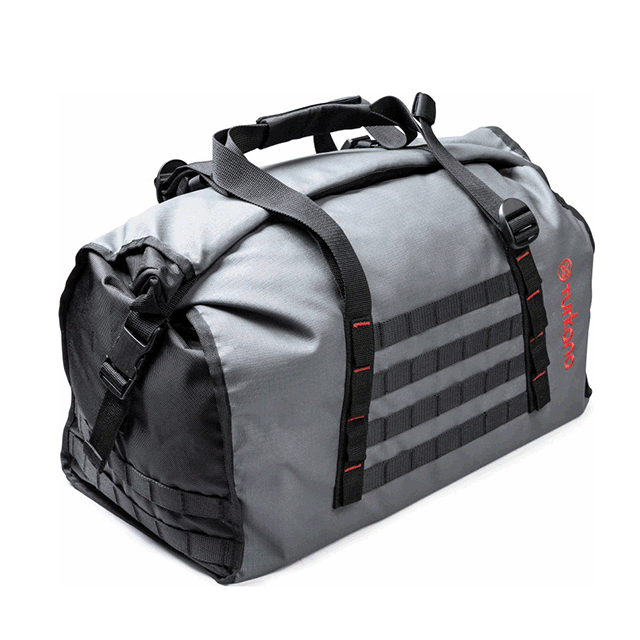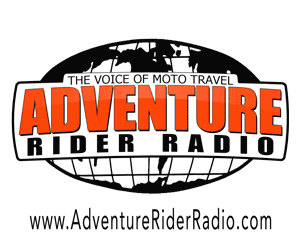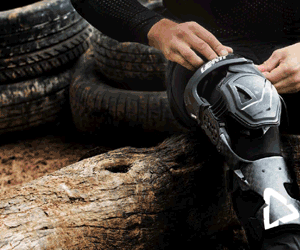“Right now we are back home. Home sweet home! Well just for a visit. We are long-term nomads we suppose, ‘visiting’ home is more accurate than saying we are home. We came back to South Africa for a few months to visit the precious ones and to of course ensure our income stream is still going. Currently, our motorcycles are patiently waiting for us in Cuzco, Peru and we hope to reunite with them by the end of September for some more spectacular Peruvian adventure riding.”

“We are Michnus and Elsebie, and our passions are motorcycle overland travel, amateur’ish photography, drinking beer and hitting up friendships with quirky people. We are the seventh or eighth generation born and bred South Africans hailing from East London. We did have a look for that long-lost aunt with the vila in France but unfortunately couldn’t find anything of the sort. In 2010 we left our ‘office careers’ and at the combined age of ninety decided it was time to travel.” And being based at the tip of Africa meant that the two had an entire continent of explorations at their doorstep. “The first mostly-spoken language we encountered while planning the trip was Swahili. We just loved the expressions they use. So piki-piki basically means a small motorcycle, imagine seeing a small scoot heading your way, and you hear ‘piki-piki-piki-piki-piki,’ well apparently that is how the word came about.”

Michnus has ridden bikes since his school years, and Elsebie started riding when she was twenty-seven. “Elsebie never took to riding pillion, and we both enjoy the challenge of riding our own bikes. Also, it is much more fun than having to overload one bike.” Together they started adventure motorcycle traveling in 2004. Before that, they were traveling with a Toyota Hilux 4×4, but that ended up becoming “a bit boring.” Originally their travels were in and around South Africa, but it only created a hunger for more. “We were the typical corporate robots. Well, not all the time but yes, we worked hard, played hard but the time available for play was always way too little to our liking. We often discussed that this could not be all that life is cut out to be. This is not living! So we left our careers a few years before we started traveling and concentrated on becoming self-employed.” Motorcycle traveling quickly became their preferred way of exploring lesser traveled roads. “Our initial attempt was only to ride from South Africa to Europe. But when that was done, we were hooked like proper druggies on a permanent high ready for more. That addiction just got worse!”

“We don’t keep score on miles as we use different motorcycles on our travels and it is our lifestyle more than a trip. We travel slow and normally take all the time a country offers us. We have been to 40 countries so far, but for miles ridden, I don’t know, it is a lot.” It should be no surprise then that Peru’s far-flung magical snow-capped Andes mountains and plateaus became one of the highlights of the traveling duo’s ongoing adventure. “We discovered a magical area where mostly local traveler’s venture too. Towering cliffs, miles of turquoise lakes, waterfalls, and rivers. It was one of those scenes where you look and just know that you can never successfully ‘picture-tell’ this to anybody.”

But Peru wasn’t without its difficulties. “We found ourselves heading to the coastal area from the mountains. As the crow flies it was not 38 mi / 60 km, but we were still at a height of about 7870 ft / 2400 m above sea-level. Something that by looking at the GPS and Google should have taken us an hour or so took us all afternoon. Now take into account that the Peruvian coast is desert, so most non-tarred or non-maintained roads become very sandy. Add the elevation drops down to the coast in a short period via sandy and twisty steep drops. Probably the worst ‘death’ road we have ever done. Peru teaches you early on that even if a road is shown as the main artery or as a tarred road, the reality can be very different. A stretch of road on a map can ‘grow’ exponentially with all the switchbacks going down, up and around mountains. The best advice we can give is to always ask the locals about the road conditions, estimated time to travel along with available fuel and water stops.”

Currently, the couple’s choice of machines is two Suzuki DR650’s which they bought in San Antonio, Texas, with the help of a friend and some fellow travelers found on the adventure motorcycling forum ADVrider.com. “We did Africa with two BMW Dakar 650’s but wanted something lighter and easier to maintain. Doing a lot of research, we decided to go with the popular DR’s as the spares availability is so much better, cheaper and easier to find. People easily throw the idea of weight not being a problem around in conversations. But once you go into places like Turkana between Kenya and Ethiopia with a loaded bike, and it is 104 f / 40 c outside while riding sand tracks you quickly understand that BS talk from egos is not helping. Even for skilled riders.”

“We are minimalists when it comes to farkles on a bike. On the one end it just adds weight, and secondly, it is more stuff to break. Most of the 650 range bikes luckily don’t need all the scaffolding and massive amount of weight and stuff the big bikes need. We stick to absolutely what is necessary and what will work. Adding and altering engines can also cause issues later on in remote places, and that is never ideal. We stick to stock as much as possible.” So for the two DR’s Michnus and Elsebie fitted 6.6 gal / 25 L Acerbis long range tanks along with handlebar protectors from the Italian company. The steering ergonomics and robustness was stepped up with ProTaper Fat handlebars and risers. Sargent seats now cushion the long miles on the two single cylinder bikes. Wider footpegs and bash plates are from JNS Engineering. Both motorcycles have been treated to Cogent Suspension upgrades for front and rear. “We also swapped out the wheel bearings with sealed units and fitted a proper aftermarket air-filter. Not for more power but for better filtration.” Along with this a couple of tool tubes, lowered side-stands with “sandfeet” and SAE plugs to charge various electronics in the tank bags round out the upgrades.

“I prefer to do most of the work myself then I know what has been done and I can make sure bolts are not ‘stripped’ and left. I am not a full blown mechanic and can’t overhaul an engine, but can help myself with normal stuff.” With their ethos of “more modifications is more to worry about” there is only one modification they are considering to add in the future. “A better headlight for sure. We do not use auxiliary lights as it is just more weight and stuff to break. So for the once in a year when we are caught riding in the dark, we have just sucked it up.” Soft luggage is by All Terrain Gear and carried on steel frame pannier racks. “It is lighter, more flexible and much safer for your legs if you fall, especially in sand. Soft luggage is also kinder to the bike’s subframe and weighs a lot less than metal panniers. To fix aluminum panniers in remote places is an issue. Anyone can fix soft panniers. The only negative people always give us is security, but ‘touch wood’ we have had no issues to date as we generally try and keep our bikes safe and out of sight. I think the security issue is also overrated as most people could easily open aluminum panniers with a screwdriver.”

The adventurous couple mostly plot their routs on two Garmin units; a Zumo 660 and Zumo 359. “We also use sites like DangerousRoads.org and information from other travelers and locals. Every country has different ways of classifying their roads, and a national road might not necessarily mean that it is a tarred road. Nor does it show any fallen bridges or mudslides. In Africa, there is a company called Tracks4Africa where you can get most of the overland tracks which is not on Google maps or even normal maps. GPS for us is also really valuable for checking the route when riding into cities. It makes navigating crazy places like Cairo and Dar Es Salaam much less stressful. We also use it as a dash to show trip and speed as the DR clock is just about useless.” Along with this they also track some of the nicer routes they’ve ridden with REVER to keep and share on their website.

“When it comes to sponsorship, we have been on both sides of this coin, and as such feel, we can offer advice and tips for both brands and individuals. What the brand owners would expect from you will be work. They want photos and videos, definitely not some dodgy, by the way, out of focus iPhone photos. They need decent high quality near professional spec photos and videos they can use for their advertising and marketing projects. They will expect you to generate traffic for their website or social media pages. Whatever you post must reflect the quality or values of their brand, and as a sponsored person you should reflect the brand. In short, you work for the brand” And as such PikiPiki Overland doesn’t have sponsors. “But we can definitely vouch for the products that we do use.” Both riders wear Klim riding gear. “The versatility of the suits are amazing. Being able to just ‘zip-up’ when it rains is magical. Elsebie has tested her suit with a few falls and is very chuffed with it. Just getting rid of the extra weight of rain suites is a blessing in of itself. The Klim gear is bulletproof and although expensive they last.” Michnus’s Badlands suite is now in its fourth year of use with well over 47 300 mi / 60 000 km covered. “I use it in rain, snow, heat, humidity. Basically whatever Mother Nature can dish up!”

Hailing from South Africa the two are also well familiar with the homegrown brand of protective gear by Leatt. “Introduced to or rather instructed by a doctor friend to get them we are so used to riding with the neck braces now that we actually feel a bit naked without them. And after Elsebie had ended up with a torn ligament in a mere ‘parking lot’ fall we now also both use the knee braces full time. It could have saved us the 20 000 USD our medical had to pay for the operations.” Other than that the one item Michnus never leaves without is a trusty Leatherman. “It is my go-to tool, and I was able to leave quite a bit of other weighty tools behind. It’s helped us out in so many ways and in places where failure was a real issue. In Uganda, for instance, the one BMW’s fuel pump stopped working, and the nose pliers was a necessity for me to open it up for repair.”

Elsebie and Michnus’s plans are simple. “To keep traveling for as long as we can physically manage it. To explore more cultures, experience more lifestyles and to appreciate all the beer the world has to offer!” And they offer sage advice for getting ones dream trip on the road to adventure. “Planning is key, and if you are not making a direct effort to start saving up, it will never happen. It takes making sacrifices, having commitment and determination.” For PikiPiki the joy in overland travel lies in taking their time. “We are very slow travelers and were able to see and experience so much more by being patient and seeking the roads not everybody travels. Our advice would always be to rather do one or two countries properly than rushing twenty just to show off the passport stamps and Facebook likes. Whole-ass one thing rather than half-ass two things!”
Find out more about PikiPiki Overland on their website and follow them on Instagram and Facebook.
All Images copyright PikiPiki Overland.





Great write up from a cool couple.
Lekker man, moerse lekker….